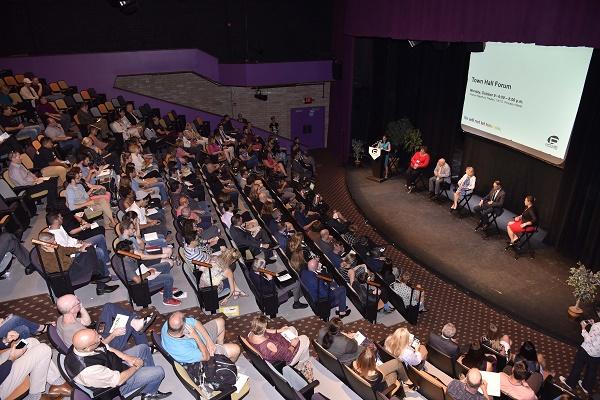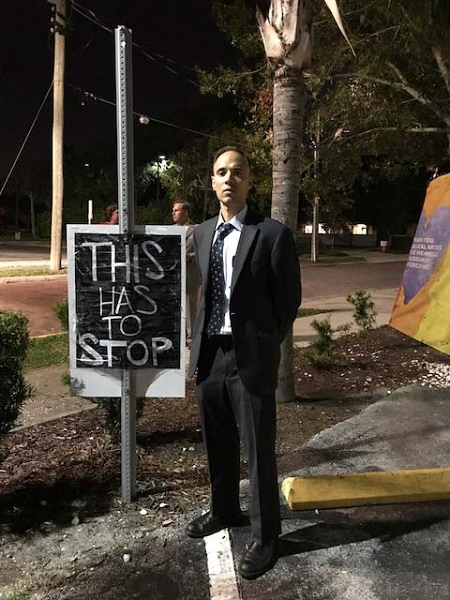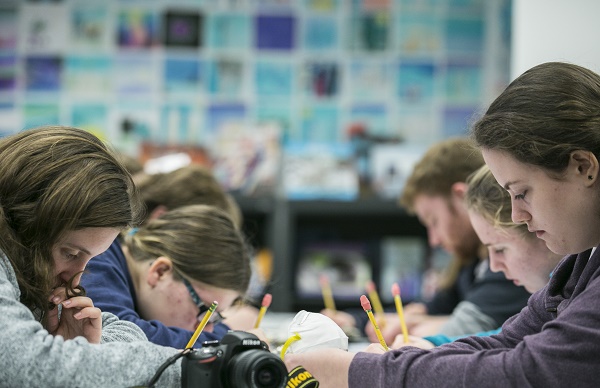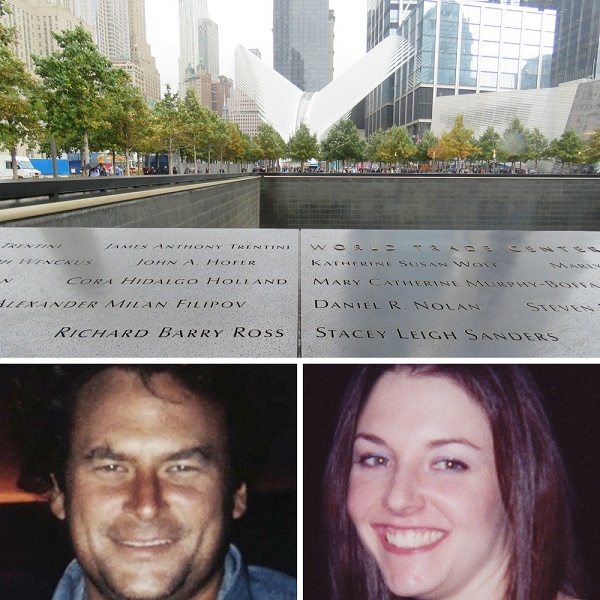Make a donation to the museum
9/11 Memorial Staff Helps Orlando Memorialize and Heal After Pulse Nightclub Shooting
9/11 Memorial Staff Helps Orlando Memorialize and Heal After Pulse Nightclub Shooting

In the warm night air of Orlando, we experienced a humbling and solemn moment standing amid the flowers, candles and heartfelt notes of the still-burgeoning memorial that encircles the Pulse nightclub. A sign taped to a pole commanded our attention on a recent October night.
It read, “THIS HAS TO STOP.”
These words certainly convey the outrage felt in the wake of the hateful attack at the Pulse nightclub on June 12, 2016, which left 49 dead, 68 injured and a community and nation in shock and mourning.
Now in the context of the mass shooting in Las Vegas on October 1, these words represent an all too frequent national refrain. For just 16 months, the Pulse nightclub was the site of the worst mass shooting in this nation’s history.
Las Vegas now assumes that grim mantle.
The onePULSE Foundation, the nonprofit organization leading the efforts to establish a permanent memorial and interpretive center, recently launched a series of town hall–style forums to engage the Orlando community about their mission. The organizers invited us to represent the 9/11 Memorial & Museum at this inaugural forum.
Having hosted representatives from the onePulse Foundation and city of Orlando in New York and attended the emotional first-year anniversary commemoration of the Pulse nightclub attack this past June, we were honored to accept this invitation.
The town hall meeting addressed issues of rapid-response memorialization and public grief, and discussed challenges and learned lessons from the processes of preserving authentic elements of the “crime scene.” Questions also focused on how to engage stakeholders and communities that have experienced unexpected mass trauma.
As an institution, 9/11 Memorial & Museum is often consulted for insight when it comes to helping victims’ families, survivors of catastrophe and other localities wishing to memorialize and heal from tragic events.
Our professional staff has also lent expertise — and moral support — to groups seeking counsel about the preservation of objects tied to these devastating events. Examples include our recent exchanges with mourning communities in Orlando, Newtown, Boston, Paris and Norway.
The evening’s discussion was wide-ranging and thought-provoking. Participants touched on the need to cast a wide net to include a diverse and broad base of stakeholders to keep the public memorial process inclusive, and the importance of preserving tangible artifacts that help to place real people in the vortex of these events and counteract the abstraction of mass casualty statistics.
The healing and cathartic power of coming together to honor the victims and share their stories and the obligation to speak to future generations about the darker passages in our common history were other themes that emerged.
There was also a good deal of discussion about the powerful draw of the 9/11 Memorial & Museum’s authenticity, collections, exhibitions and programs, evidenced by the millions of people from all places and walks of life who have visited our site to pay their respects, to connect with and learn about the events that transpired here, to find inspiration and to glean some understanding of the complex and ever-evolving world in which we live.
One consistent message we attempted to impart was that while the sobering scale and archeology of the 9/11 Memorial & Museum may remind visitors of the dangers we continue to face in these unsettled times, the Memorial and Museum also have become a leading pilgrimage destination: a place of hope and pride, symbols of our nation’s resilience.
Most importantly, they serve as reminders that through our collective responses to these attacks, we hold the power of demonstrating how the best of humanity will always triumph over the worst of it.
In the aftermath of the Orlando rampage, signs and banners soon proliferated and remain at the attack site, declaring “WE WILL NOT LET HATE WIN.” That promise has energized the community and no doubt will infuse the permanent memorial to the Pulse nightclub victims now underway.
In a particularly poignant moment, a forum panelist channeled the sentiment expressed in the “THIS HAS TO STOP” sign.
“The goal is not to be an expert at memorializing,” said Ed Linenthal, Ph.D., author and professor of history and American studies at Indiana University. “It’s to prevent it from happening again.”
 Anthony Gardner at the site of the Pulse nightclub shooting. Photo by Jan Seidler Ramirez.
Anthony Gardner at the site of the Pulse nightclub shooting. Photo by Jan Seidler Ramirez.
The full video of the town hall forum, which was livestreamed by WUCF TV Central Florida PBS, is viewable here.
By Anthony Gardner, Senior Vice President of Government & Community Affairs, and Jan Seidler Ramirez, Executive Vice President of Collections & Chief Curator, 9/11 Memorial & Museum
Previous Post
9/11 Memorial Education Programs for Tri-State Area Schools Now Free

The 9/11 Memorial & Museum is excited to announce that student workshops and student tours are now free for all New York City schools for the remainder of the 2017–2018 school year, thanks to generous support from the Arthur M. Blank Family Foundation.
Next Post
Meaningful Adjacencies: Richard Barry Ross and Stacey Leigh Sanders

The nearly 3,000 names inscribed on the 9/11 Memorial are arranged in accordance with the victims’ relationships, the companies they worked for and where they were on 9/11.